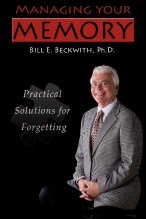Drug Failure Casts Doubt on Alzheimer’s Theory
Do we really have a breakthrough in diagnosis and treatment of Alzheimer’s disease? In our desperation for a cure, we have gotten ahead of biology and cast all of our hopes on the amyloid hypothesis ignoring the complexity of Alzheimer’s disease. The amyloid hypothesis drives a multitude of clinical trials currently underway by pharmaceutical companies to find the cure for Alzheimer’s disease. Simply stated, the hypothesis proposes that build up of beta amyloid, an abnormal protein in the brain, is the cause of Alzheimer’s disease. Hence, treatments are sought that either stop or reverse the production of amyloid proteins in the brain. One of the medications under investigation was semagacestat, a drug developed by Lilly Pharmaceuticals.
The trials had advanced to the point where there were 2600 patients enrolled in the clinical trials comparing semagacestat with a placebo. This medication attacks the abnormal amyloid. In theory this is a good thing. However, the trials were terminated because the results indicated (1) that the medication did not slow the disease as expected, (2) the medication made cognition worse, and (3) the medication made treated patients less able to care for their personal needs. This led to many commentaries defending the amyloid hypothesis despite this important failure. This is a natural reaction to information that goes contrary to one’s beliefs. We regroup and find new ways to support our belief and minimize or ignore contrary evidence.
But in this case, the failure of semagacestat should cast doubt on the amyloid theory. We need to pursue the science behind this theory and its failure but we need to be careful in moving ahead with a single minded theory. This could be a costly blind alley. As discussed in an earlier article, the amyloid hypothesis has a number of other problems. For example, there are other data from clinical trials with amyloid drugs that reverse the buildup of beta amyloid but have no clinical benefit. Furthermore, a substantial number of people develop enough plaques as they age that they meet the pathological criteria for Alzheimer’s disease on autopsy but have no symptoms of the disease.
There is a strong push to add expensive (e.g., brain scans to see the amyloids) and invasive (e.g., spinal taps to assay the amyloids) tests as routine diagnostic assessment for Alzheimer’s disease. The failure of the Lilly drug makes me concerned about the path we are taking. We still don’t know whether the abnormal amyloids are the cause or the effect of the disease. These tests belong in the research lab not in the clinic. Until we better understand the biology and can safely modify the disease, rigorous and sequential memory testing and direct treatment of memory should be as routine as annual physicals. If you are going to develop Alzheimer’s disease, you must learn to implement memory and coping skills before your short-term memory fades too far to learn them.




